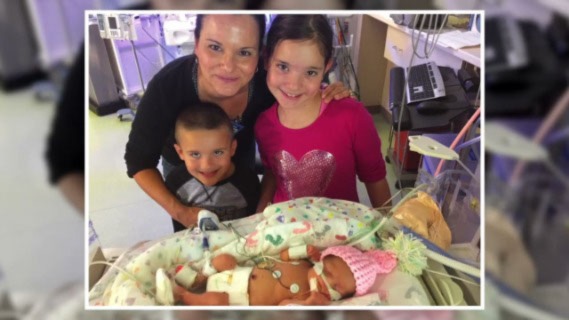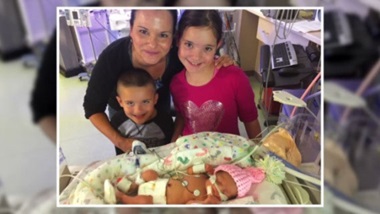Lower Urinary Tract Obstruction
What is lower urinary tract obstruction?
A lower urinary tract obstruction (LUTO) is a rare fetal condition that occurs when there is a blockage in the urinary tract of a developing fetus.
The urinary tract:
The urinary tract consists of the organs that produce and store urine:
-
Two kidneys
-
Two ureters
-
The urinary bladder
-
The urethra
As a fetus grows in the womb, urine made by the kidneys flows through the ureters into the bladder. Urine is stored in the bladder until it gets full. When the bladder is full, it pushes the urine out of the body through a tube called the urethra. The kidneys and ureters are called the upper urinary tract and the bladder and urethra are called the lower urinary tract. LUTO occurs when the flow of urine is blocked from exiting the body at the level of the lower urinary tract.
When LUTO occurs, all parts of the urinary tract that lie above the obstruction may become swollen with urine that cannot drain. Over time this blockage can lead to permanent kidney damage. When urine can no longer be drained, the fluid around the fetus (amniotic fluid) decreases. This can lead to lung damage because the fetus must move amniotic fluid in and out of the lungs in order for them to develop properly. Therefore, LUTO can lead to damage in more than one organ system.
Preventing and Treating Birth Defects: What You Need to Know

While some birth defects can be prevented through prenatal care, it's important to know what treatments may exist if your fetus is diagnosed with a birth defect.
What causes lower urinary tract obstruction?
Sometimes LUTO is caused by a problem with a fetus’s chromosomes or by a genetic disorder. If so, additional medical problems or organ abnormalities may be present. Sometimes in male fetuses a fold of tissue from the bladder (posterior urethral valve) blocks the hole that allows drainage of the bladder into the urethra. In other instances, parts of the urethra may be too narrow or completely blocked (urethral atresia).
LUTO without any other underlying conditions is called "isolated" LUTO. While ultrasounds and amniocentesis can help determine the cause of LUTO, testing after birth will give the most accurate analysis of a baby’s condition.
The Johns Hopkins Center for Fetal Therapy

Our team partners with patients and their families to deliver personalized care for a wide range of complex prenatal conditions.
Lower Urinary Tract Obstruction Treatment
If a LUTO seems to be isolated, fetal surgical treatment may help decrease the amount of lung and kidney damage that can occur during pregnancy. The goal of fetal treatment is to provide constant drainage of urine from the body into the amniotic fluid. This prevents urine buildup and helps to normalize amniotic fluid volume. The type of treatment used depends on where in the urinary tract the blockage occurs. Types of treatments include:
-
Vesicocentesis: A needle is placed into the fetal bladder to remove the urine. Multiple procedures may be needed if urine repeatedly builds up in the bladder. One in ten fetuses may require only a single vesicocentesis to resolve LUTO.
-
Vesicoamniotic shunt: A small, plastic tube called a shunt is inserted into the bladder to allow the flow of urine from the bladder to the outside of the fetus. The shunt remains in the bladder until the baby is born.
-
Fetal cystoscopy: A small, surgical camera called a cystoscope can be inserted into the fetus’s urethra and bladder to remove any blockage in the flow of urine.
Not all attempts at fetal treatment are successful. Sometimes the position of the fetus makes it difficult to detect on ultrasound, making it impossible to perform a fetal therapy procedure. Even if a fetal treatment successfully decreases the amount of urine trapped in the baby, complications can still occur. The urine can build up again over time.
Fetal surgery does not completely eliminate the possibility of severe kidney or lung damage. Since fetal intervention involves risks to the fetus and to the mother, it is important to reserve these prenatal treatments for only certain fetuses with LUTO.
What happens after fetal treatment for LUTO?
A baby who has received fetal treatment for LUTO will need to be delivered in a hospital with a neonatal intensive care unit (NICU). After delivery, the NICU can do more testing to figure out the cause of the LUTO. Depending on the exact diagnosis, surgery may be needed to create a permanent way for urine to leave the baby’s body. Therapies like dialysis and kidney transplant may also be needed. How sick a baby will be after birth depends on how severe the lung and kidney damage are and the cause of the LUTO.






